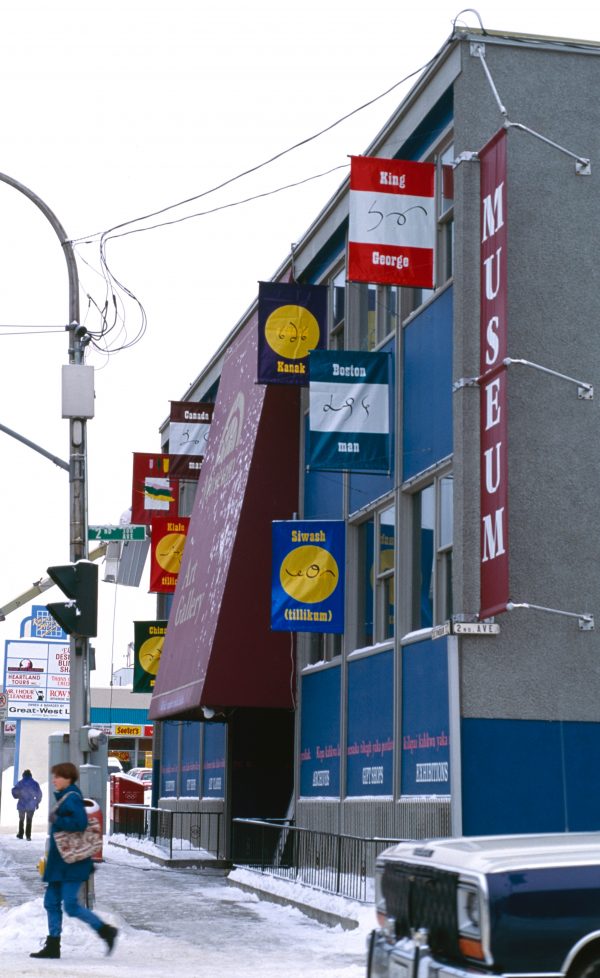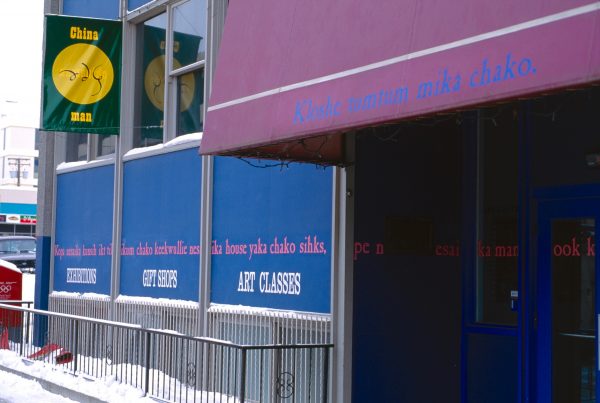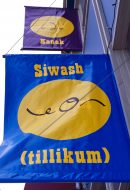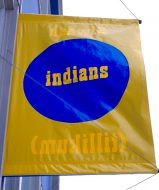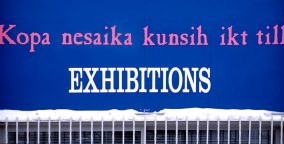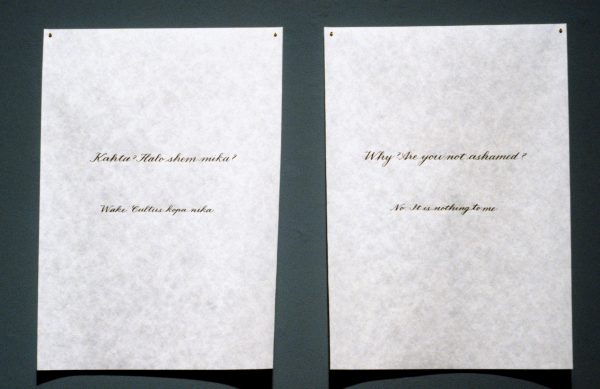Site-specific installation in Kamloops Art Gallery and City Archives, Kamloops, BC, Canada. Banners, vinyl lettering, and electronic message boards were applied to the façade of the Gallery/Museum with a series of ink on parchment paper diptychs inside the gallery space. Additional translations by Duane Pasco.
Kamloops Wawa, 1993, is a site-specific installation that resurrects Chinook Jargon, a pidgin dialect used extensively throughout the 19th Century along the west coast. In 1891, the Oblate priest at the local Indian Mission, Father Lejeune, began publishing the Kamloops Wawa (meaning “Echo/Talk/Call”), a newsletter that reported local stories, church hymns, biblical stories, and passion plays in English, French, and Chinook Jargon using a form of phonetic shorthand based on the Duployan method of stenography. LeJeune felt he could increase the literacy of the local indigenous people, as well as facilitate their conversion to Christianity. In 1893, The Kamloops Wawa gained international recognition when it was exhibited by the Smithsonian Institute at the world’s fair in Chicago.
Chinook Jargon was used primarily as a vehicle for intercultural communication and trade. The majority of the approximately 500 word vocabulary can be traced to the dialect of the Chinook tribe in Oregon. This lingua franca was used by an estimated 100,000 to one million speakers throughout the nineteenth century in an area that stretched from the Rocky Mountains to the Pacific Ocean, from northern California to the Alaskan panhandle.
Like any pidgin language, Chinook Jargon was dynamic and flexible, absorbing different cultural systems of naming. Originally used for intertribal exchange among the First Nations peoples of the west coast, the “Trade Language” as it is also known, adapted and changed greatly with, initially, white American and European contact. By the middle of the 20th Century, the jargon fell out of use, succumbing to the dominance of English.
In 1879, Bishop Paul Durieu compiled a lexicon, his “Chinook Practical Vocabulary,” wherein the types of peoples who had come into contact with area is listed. The banners installed on the exterior of the Gallery/Archive refer to this list:
Frenchman – Passayoox
Englishman – King George
American – Boston man
Canadian – Canada man
indians – Siwash (tillikum)
chinaman – China man
niggers – Klale tillikum
Kanak – Kanaka
In 1910, a “memorial” letter from the Chiefs of the Shuswap, Okanagan, and Couteau Tribes was presented to Sir Wilfrid Laurier, Premier of the Dominion of Canada, when he visited Kamloops. This document was a request to open discussions on, among other things, aboriginal rights and sovereignty.
Two sentences from this letter have been translated from its original English into Chinook Jargon by Duane Pasco, and was installed onto the front exterior of the building using vinyl lettering. Two other texts, the English and a re-translation from the Chinook Jargon back into English, ran on electronic message boards installed over the main doors. The English version is as follows:
Welcome.
With us when a person enters our house
he becomes our guest,
and we must treat him hospitably
as long as he shows no hostile intentions.
At the same time we expect him to return to us
equal treatment for what he receives.
The calligraphy in the gallery component of Kamloops Wawa refers to the handwriting style employed at the time of Kamloops’ incorporation in 1893. Ten questions and answers typical of first contact, taken directly from Trade Language dictionaries from the turn of the century, are presented in both Chinook Jargon and English.


